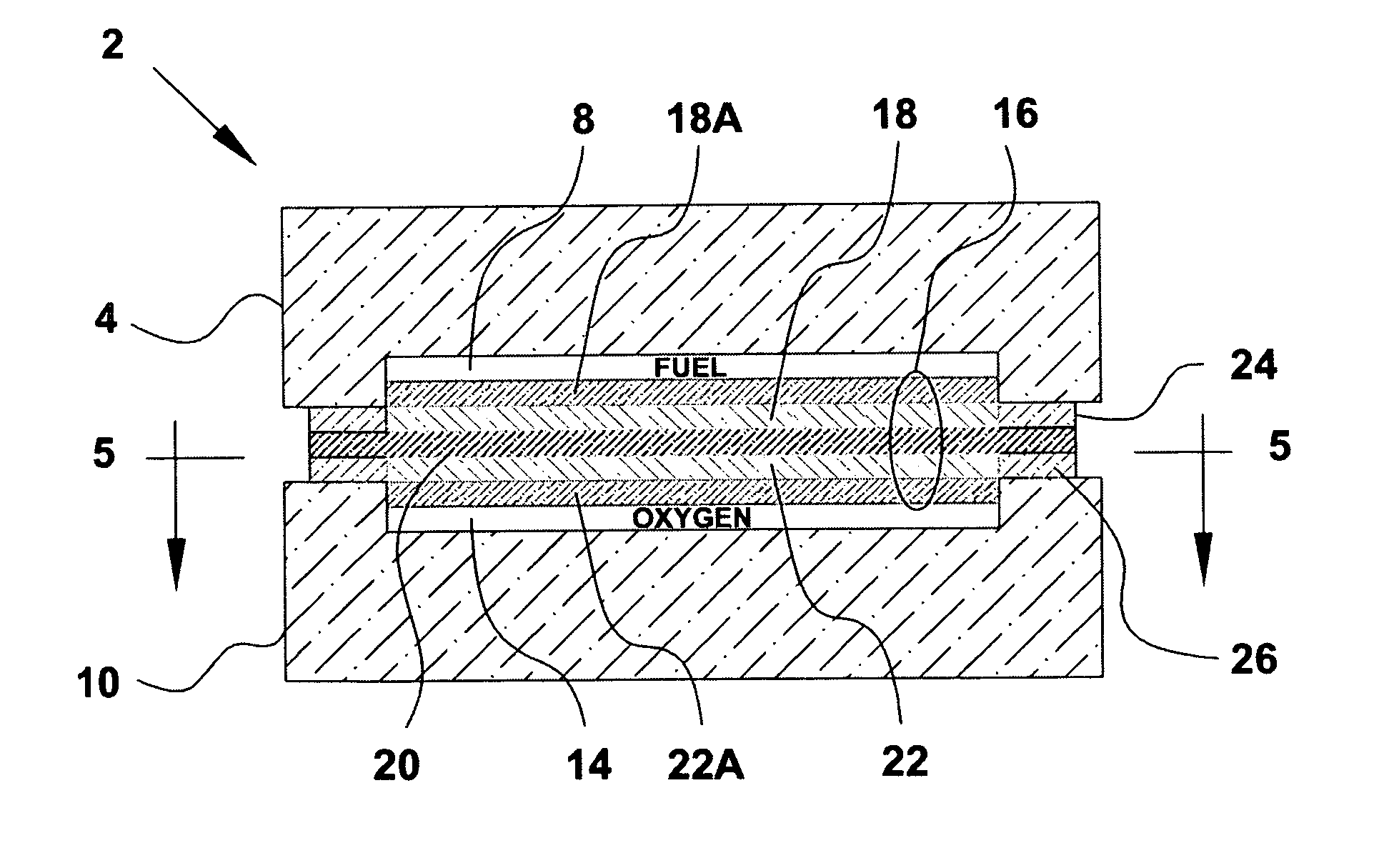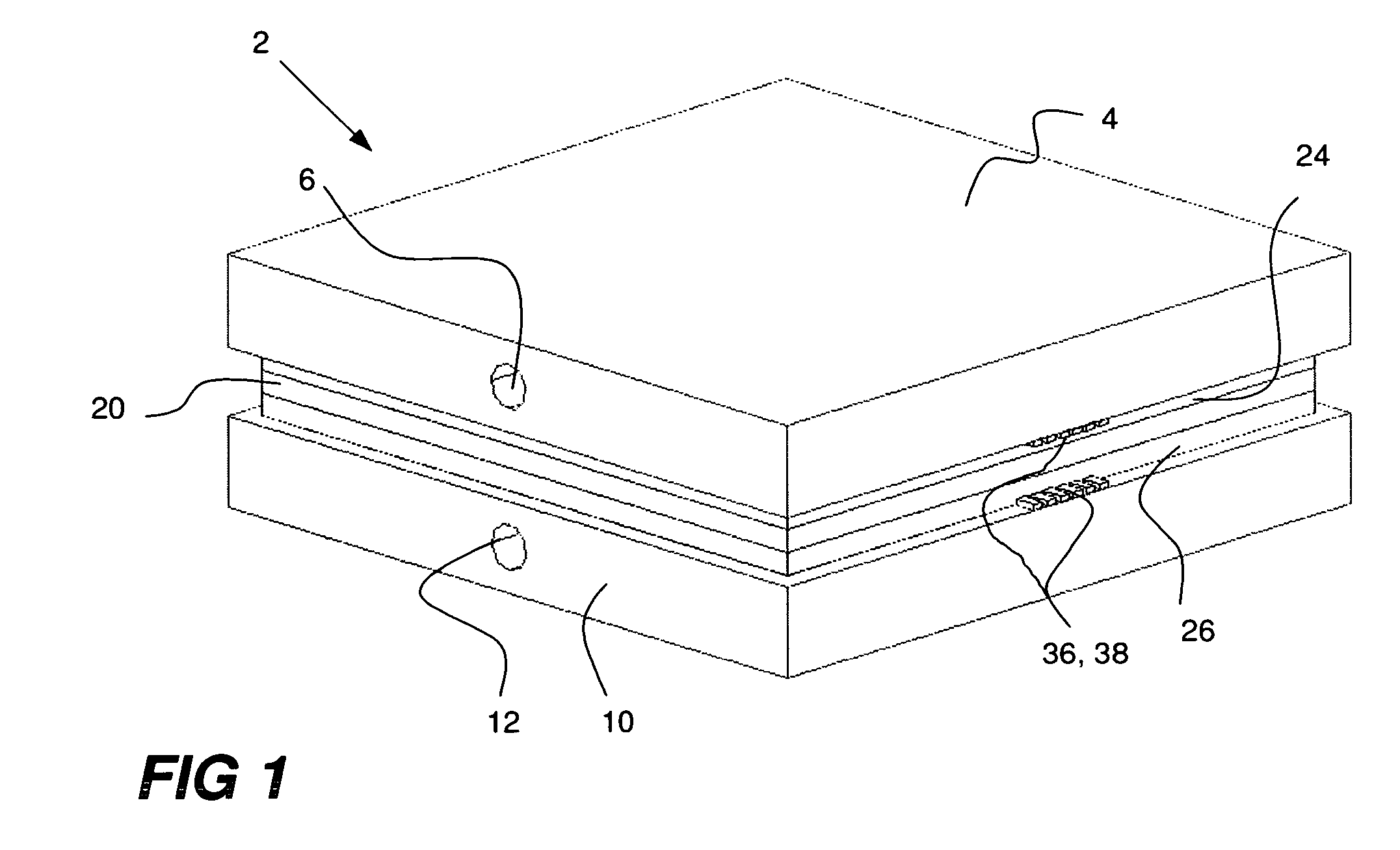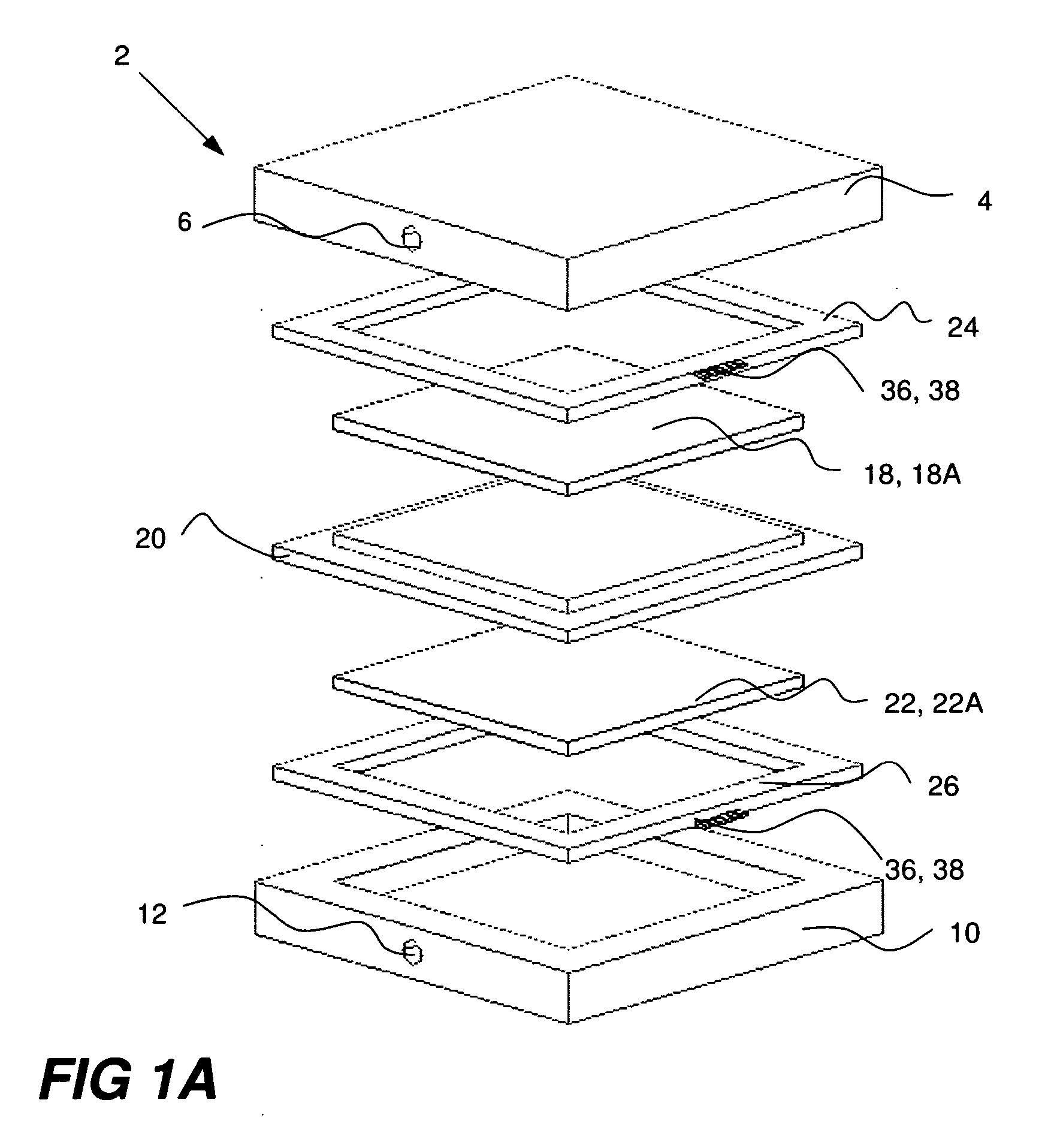In-situ seal integrity monitoring
a seal integrity and monitoring technology, applied in fluid-tightness measurement, instruments, electrochemical generators, etc., can solve the problems of severe thermal stress, inconvenient monitoring of seal integrity, and consequent seal failur
- Summary
- Abstract
- Description
- Claims
- Application Information
AI Technical Summary
Benefits of technology
Problems solved by technology
Method used
Image
Examples
Embodiment Construction
[0034] As summarized above, the present invention facilitates monitoring of the integrity of high-temperature seals constructed from dielectric materials, including glass, ceramic, plastic, etc. By embedding a transmission line within the seal and utilizing transmission line measurement techniques such as time domain reflectometry and / or frequency response analysis, anomalies such as seal dielectric constant variations and / or transmission line disruptions can be detected. Such evaluation provides useful information for making determinations about seal integrity in a manner that permits safe seal operation and minimization of resultant stress modes.
[0035] Although the invention can be used in many different high-temperature seal environments, the invention is particularly useful in applications that utilize glass or ceramic seals. One such application is the solid oxide fuel cell, and FIGS. 1-3 show an exemplary (and greatly simplified) construction of such a device. In particular, ...
PUM
 Login to View More
Login to View More Abstract
Description
Claims
Application Information
 Login to View More
Login to View More - R&D
- Intellectual Property
- Life Sciences
- Materials
- Tech Scout
- Unparalleled Data Quality
- Higher Quality Content
- 60% Fewer Hallucinations
Browse by: Latest US Patents, China's latest patents, Technical Efficacy Thesaurus, Application Domain, Technology Topic, Popular Technical Reports.
© 2025 PatSnap. All rights reserved.Legal|Privacy policy|Modern Slavery Act Transparency Statement|Sitemap|About US| Contact US: help@patsnap.com



